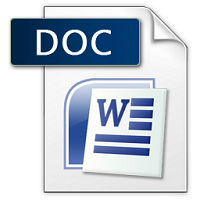₹198.00
Scroll down for Match your questions with Sample
Note- Students need to make Changes before uploading for Avoid similarity issue in turnitin.
Another Option
UNIQUE ASSIGNMENT
0-20% Similarity in turnitin
Price is 700 per assignment
Unique assignment buy via WhatsApp 8755555879
Description
| SESSION | JAN-FEB’24 |
| PROGRAM | MASTER OF BUSINESS ADMINISTRATION (MBA) |
| SEMESTER | 4 |
| COURSE CODE & NAME | DMBA105 – MANAGERIAL ECONOMICS |
Assignment Set – 1
- Why demand curve slopes downwards? What are its exceptions? 4+6
Ans 1.
The demand curve, a fundamental concept in economics, typically slopes downward. This pattern reflects the inverse relationship between the price of a good or service and the quantity demanded by consumers. In other words, as the price of a product decreases, the quantity demanded generally increases, and vice versa. This downward slope can be attributed to several economic principles and behavioral responses, which include the substitution effect, the income
Its Half solved only
Buy Complete from our online store
https://smuassignment.in/online-store/
MUJ Fully solved assignment available for session FEB 2024.
Lowest price guarantee with quality.
Charges INR 198 only per assignment. For more information you can get via mail or Whats app also
Mail id is aapkieducation@gmail.com
Our website www.smuassignment.in
After mail, we will reply you instant or maximum
1 hour.
Otherwise you can also contact on our
whatsapp no 8791490301.
- Why demand curve for a firm in perfectly competitive market is horizontal whereas it is downward sloping in imperfectly competitive market. 5+5
Ans 2.
In the realm of economics, understanding why demand curves differ in shape between perfectly competitive and imperfectly competitive markets is fundamental. This exploration sheds light on the differing market dynamics and the strategic positioning of firms within these markets.
Demand Curve in
Top of Form
- Explain the different types of cost with suitable example. 10
Ans 3.
In economics and business management, the concept of cost is multifaceted, reflecting various aspects of spending incurred by organizations or individuals. These costs are categorized based on their characteristics and the context in which they occur. Below are some key types of costs, each illustrated with examples to facilitate a clearer understanding:
- Fixed Costs
Fixed costs are expenses that do
Top of Form
Assignment Set – 2
- Write down the ways to control inflation of a country. 10
Ans 4.
Strategies to Control Inflation in an Economy
Inflation, characterized by a sustained increase in the general price level of goods and services in an economy, can have a significant impact on economic stability and purchasing power. Governments and central banks use various strategies to control inflation. These measures are crucial for maintaining economic stability and can be broadly categorized into monetary policies, fiscal policies, and
- Summarize the different objectives of pricing policies. 10
Ans 5.
Pricing policies are fundamental for businesses as they directly impact revenue generation, market positioning, and overall strategic goals. Different pricing objectives guide how a company sets its prices, and these objectives can vary based on the company’s market, product life cycle, and competitive environment. Here are several key pricing objectives that companies might prioritize:
- Define and discuss the importance of consumption function and saving function in detail. 10
Ans 6.
The consumption function and the saving function are fundamental concepts in economic theory, particularly within Keynesian economics. These functions provide insight into the spending and saving habits of individuals and play a crucial role in determining the overall economic activity and growt

